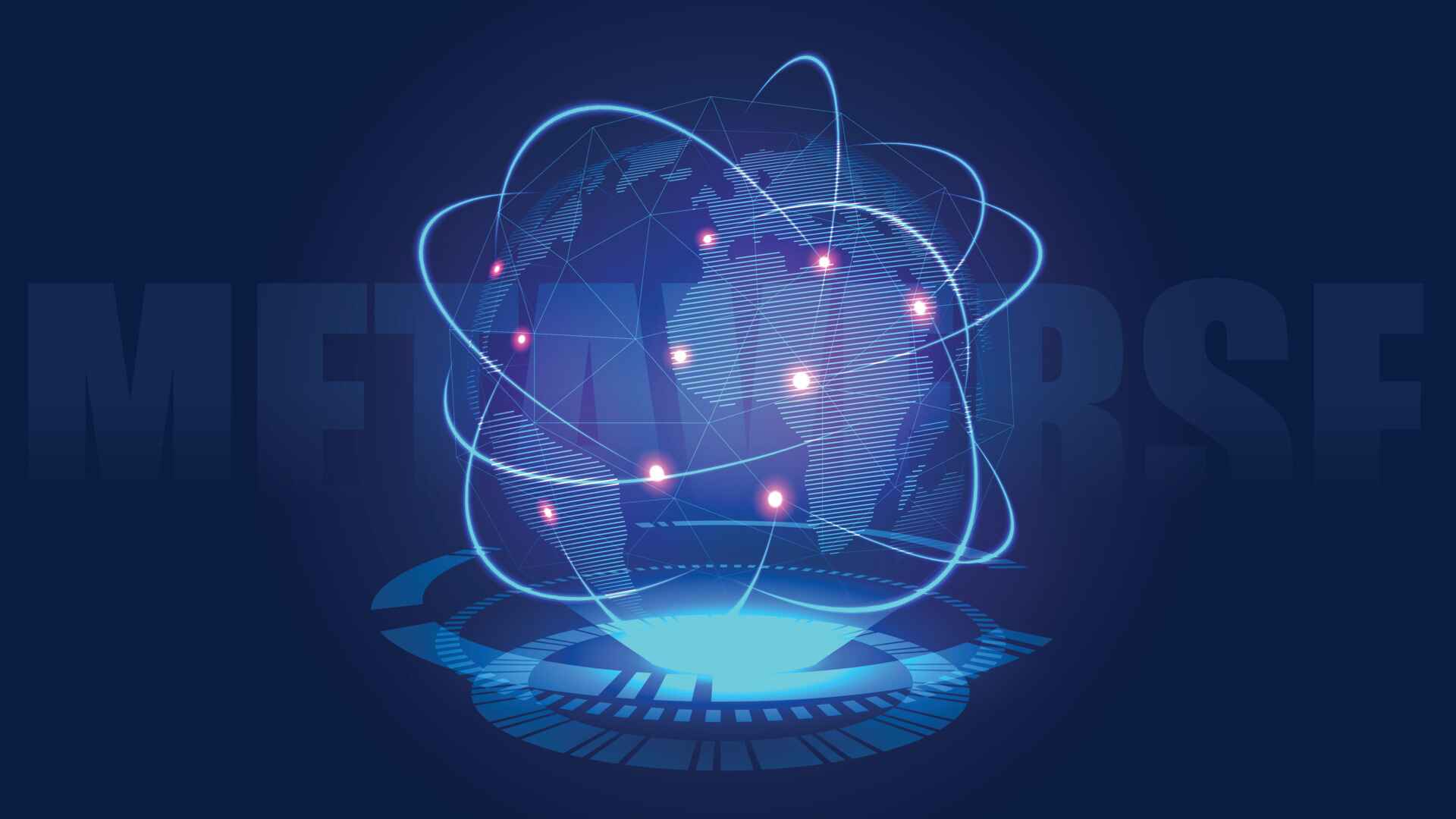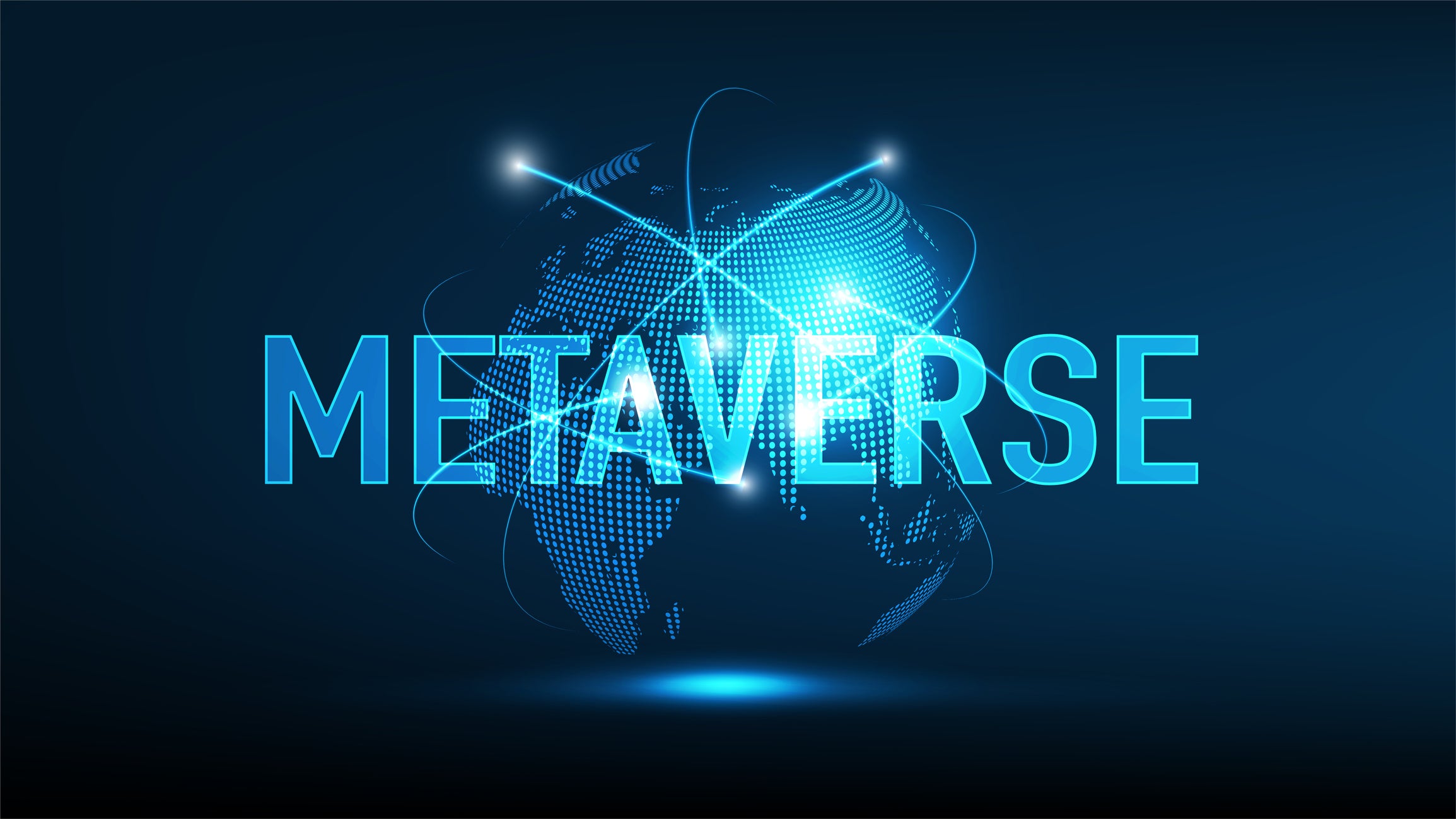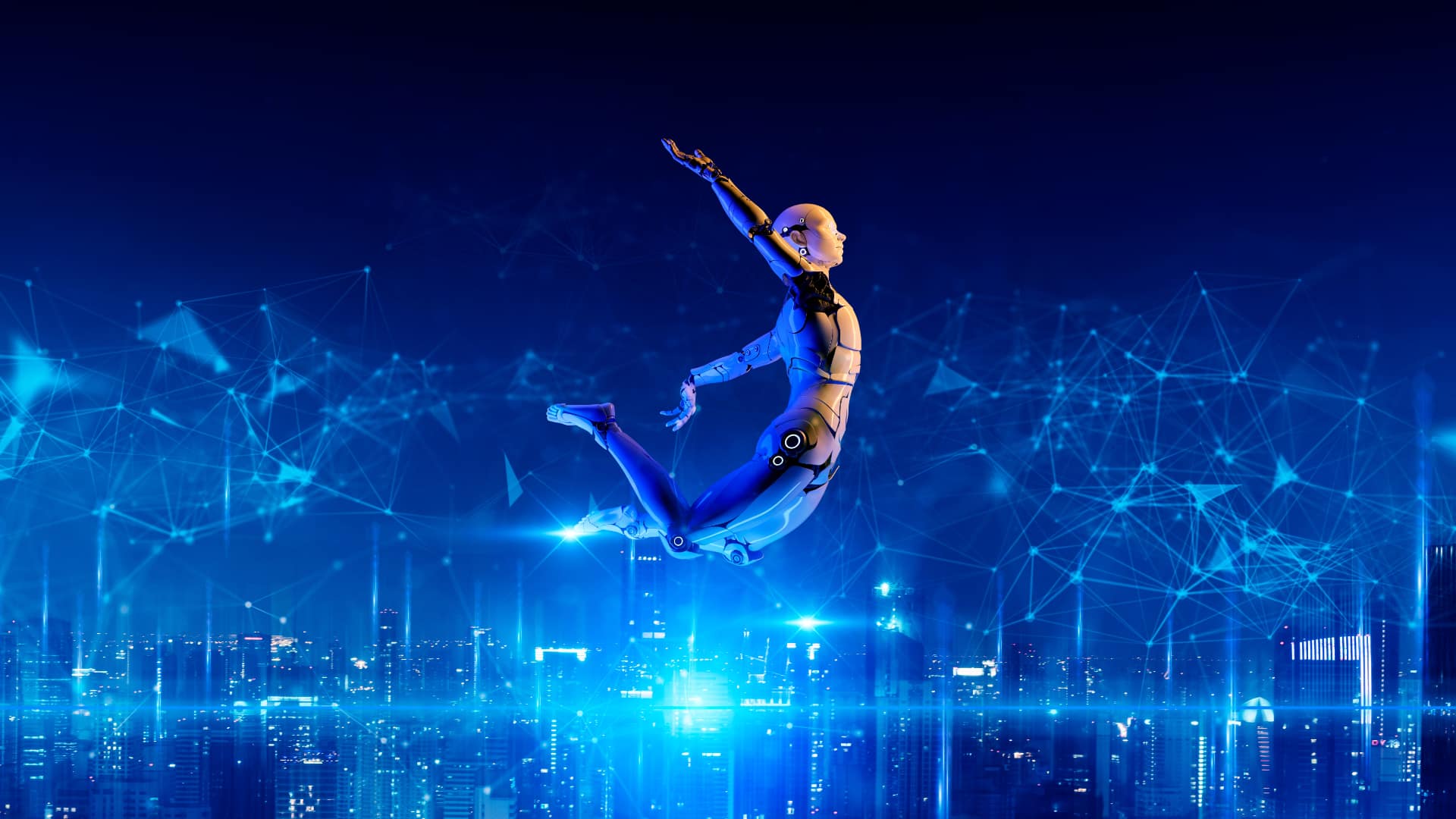Introduction
Welcome to the future. The Metaverse, a term coined by Neal Stephenson in his science fiction novel “Snow Crash,” has become a buzzword in recent years. While it may sound like a futuristic concept, the idea of the Metaverse is becoming increasingly relevant as technology continues to advance at an unprecedented pace.
The Metaverse can be described as a virtual universe, a collective virtual shared space where people can interact with digital content and each other. It is not limited to a specific platform or technology but encompasses various virtual reality (VR) and augmented reality (AR) platforms and applications.
Think of it as a limitless digital realm that transcends physical boundaries. In the Metaverse, you can explore virtual worlds, interact with other users, create and trade digital assets, and even conduct business. It is a convergence of real and virtual worlds, where technology becomes the gateway to a vast and immersive digital experience.
So, what is the purpose of the Metaverse? The primary goal is to provide a platform for connectivity, collaboration, and limitless possibilities. It offers a new dimension of social networking and entertainment while opening up opportunities for education, commerce, and innovation.
The rise of the Metaverse has been driven by advancements in technology, particularly in the fields of virtual reality and augmented reality. VR technology allows users to be fully immersed in a digital environment, while AR overlays digital content onto the real world. These technologies have the potential to transform our everyday experiences, making the Metaverse a reality.
Moreover, the COVID-19 pandemic has accelerated the adoption of virtual experiences and digital interactions. With restrictions on physical gatherings and travel, people have turned to the virtual world for entertainment, education, and socializing. This shift has highlighted the need for more immersive and engaging virtual platforms, paving the way for the emergence of the Metaverse.
In the following sections, we will delve deeper into the definition of the Metaverse, explore its historical background, examine its potential applications in various industries, discuss the social and economic implications, and address the challenges and concerns that come with its development.
Definition of the Metaverse
The term “Metaverse” refers to a digital realm or universe where people can engage in virtual experiences, interact with each other, and access digital content. It goes beyond traditional virtual reality, extending into various technologies such as augmented reality and mixed reality.
In the Metaverse, users can explore immersive virtual worlds, create avatars, communicate with other users in real-time, participate in events, and engage in a wide range of activities. It is a dynamic and interconnected network of digital spaces that allows for seamless transitions between different virtual environments.
One of the defining characteristics of the Metaverse is its persistence. Unlike traditional online platforms that are limited to a specific time or session, the Metaverse is always accessible and evolving. It enables users to have a continuous presence and engage in activities that have lasting effects.
Another important aspect of the Metaverse is interoperability. It aims to connect different virtual worlds, platforms, and applications, allowing for cross-platform communication and interaction. This means that users can seamlessly move between different virtual spaces without losing their progress or disconnecting from their social networks.
Furthermore, the Metaverse fosters user-generated content and creativity. Users can contribute to the development and customization of virtual worlds, creating their own environments, objects, and experiences. This user-driven aspect of the Metaverse promotes collaboration, innovation, and personalization.
It is essential to note that the concept of the Metaverse goes beyond mere entertainment and social networking. It has the potential to revolutionize various industries, such as education, healthcare, manufacturing, and finance. The Metaverse can facilitate immersive learning experiences, virtual medical consultations, virtual product testing, and even virtual economies and marketplaces.
With advancements in technology and the growing popularity of virtual reality and augmented reality, the development of the Metaverse is becoming a reality. However, it is still a work in progress, and there are ongoing discussions and debates regarding its structure, governance, privacy, and ethical implications.
In the next sections, we will explore the historical background of the Metaverse, the concept of a virtual reality universe, the potential applications in various industries, the social and economic implications, the challenges and concerns, and the importance of building a sustainable and inclusive Metaverse.
Historical Background
The concept of the Metaverse has deep roots that can be traced back to the early days of computer science and science fiction. While the term itself may be relatively recent, the idea of a virtual reality universe has been a subject of fascination for decades.
In the 1980s, computer scientist Jaron Lanier popularized the term “virtual reality” and founded VPL Research, a company focused on developing VR hardware and software. Lanier’s vision of a fully immersive digital world laid the groundwork for the Metaverse concept.
Another significant milestone in the history of the Metaverse is the publication of Neal Stephenson’s science fiction novel “Snow Crash” in 1992. The book introduced the term “Metaverse” and portrayed a futuristic society where people escape reality through a virtual universe.
Following the publication of “Snow Crash,” the idea of the Metaverse gained traction in both popular culture and academic discussions. It became a topic of exploration for researchers and industry professionals, inspiring advancements in virtual reality technology and shaping the vision of a connected digital world.
In the early 2000s, virtual world platforms like Second Life and MMO games like World of Warcraft began to emerge. These platforms allowed users to create virtual avatars, interact with other users, and engage in various activities within a shared digital space. While not explicitly referred to as the Metaverse, these platforms embodied many of its core principles.
Fast forward to the present day, and the Metaverse is experiencing a resurgence of interest and development. The advancements in virtual reality and augmented reality technologies, along with the increasing demand for immersive digital experiences, have propelled the concept into the mainstream.
Tech giants like Facebook and Microsoft have invested heavily in VR and AR, with ambitions to create their own versions of the Metaverse. These efforts aim to create interconnected digital ecosystems that offer seamless user experiences across multiple devices and platforms.
Beyond the realm of entertainment, various industries are exploring the potential of the Metaverse. Companies are leveraging virtual reality for training simulations, architectural visualizations, and virtual conferences. Healthcare professionals are utilizing augmented reality for surgical planning and medical education. The applications are vast and continue to expand.
However, as the development of the Metaverse progresses, there are important considerations to address. These include issues of privacy, security, digital rights ownership, and equitable access. Defining clear standards and establishing ethical guidelines will be crucial to ensure the success and sustainability of the Metaverse.
In the following sections, we will explore the concept of a virtual reality universe, the potential applications across various industries, the social and economic implications, the challenges and concerns, and the importance of fostering a sustainable and inclusive Metaverse.
The Concept of a Virtual Reality Universe
The concept of a virtual reality universe lies at the heart of the Metaverse. It envisions a digital realm where users can immerse themselves in lifelike virtual experiences and interact with others in real-time.
Virtual reality (VR) technology plays a pivotal role in creating this immersive environment. By putting on a VR headset, users can step into a simulated world that engages their senses, providing a sense of presence and spatial awareness. They can explore realistic virtual environments, interact with objects, and even manipulate their surroundings.
Within this virtual reality universe, users typically create digital avatars, personalized representations of themselves, which serve as their virtual embodiments. These avatars can be customized with unique appearances, clothing, and accessories, allowing users to express their individuality within the digital space.
Real-time interaction is a key aspect of the virtual reality universe. Users can communicate and collaborate with others who are connected to the same virtual space, enabling social interactions similar to those in the physical world. This sense of presence and shared experiences fosters a sense of community and enables new forms of social interaction.
Furthermore, the concept of a virtual reality universe goes beyond passive consumption of digital content. It encourages user-generated content and creativity, allowing users to build and shape their own virtual environments, objects, and experiences. This user-driven approach empowers individuals to contribute to the development and evolution of the virtual reality universe, fostering collaboration and innovation.
Virtual reality universes have enormous potential for various applications. In the realm of entertainment, they offer immersive gaming experiences where users can become fully immersed in virtual worlds, engaging in thrilling adventures and challenging quests.
However, the concept of a virtual reality universe extends beyond entertainment. It has the potential to revolutionize education by enabling immersive learning experiences. Students can explore historical events, dive into scientific simulations, or travel to distant places, enhancing their understanding and engagement with the subject matter.
Virtual reality universes also hold promise in the field of healthcare. They can be used for virtual medical training, allowing medical professionals to practice complex procedures in a safe and controlled environment. Additionally, virtual reality can aid in pain management, rehabilitation, and exposure therapy for various mental health conditions.
Industrial applications of virtual reality universes include virtual prototyping and simulations for product design and engineering. Architects and interior designers can create immersive visualizations of buildings and spaces, allowing clients to experience and provide feedback before construction begins. Virtual reality can also facilitate virtual conferences and remote collaborations, eliminating the need for physical travel and enhancing productivity.
In the subsequent sections, we will explore the potential applications of virtual reality universes across industries, delve into the social and economic implications, discuss the challenges and concerns, and emphasize the importance of building a sustainable and inclusive Metaverse.
Virtual Reality and Augmented Reality
Virtual reality (VR) and augmented reality (AR) are two key technologies that contribute to the development of the Metaverse. While they have distinct characteristics, both VR and AR play integral roles in creating immersive digital experiences and blurring the boundaries between the physical and virtual worlds.
Virtual reality involves creating a simulated environment that users can enter and interact with using specialized hardware, such as a VR headset. In a virtual reality experience, users are fully immersed in a digital world that engages their senses, providing a sense of presence and spatial awareness. They can explore virtual environments, interact with objects, and even manipulate their surroundings.
Augmented reality, on the other hand, overlays digital content onto the real world, enhancing the user’s perception of their physical environment. AR is typically experienced through devices like smartphones, tablets, or smart glasses, which use cameras and sensors to detect and track the real-world surroundings. This technology allows digital information to be seamlessly integrated into the user’s view, adding a layer of virtual content to the physical world.
While both VR and AR offer unique experiences, they are not mutually exclusive. In fact, they can complement and intersect with each other, creating a spectrum of mixed reality experiences. Mixed reality (MR) combines virtual and real-world elements, allowing users to interact with both virtual objects and physical surroundings in a blended environment.
The applications of VR and AR extend beyond entertainment and gaming. For example, in the field of education, VR can enable immersive and interactive learning experiences. Students can step into historical events, explore scientific concepts, or visit far-off places, enhancing their understanding and engagement. AR can enhance traditional educational materials by overlaying additional information, graphics, and animations onto textbooks or other learning materials.
In healthcare, VR and AR have demonstrated tremendous potential. Virtual reality can be used for medical training simulations, allowing healthcare professionals to practice procedures and develop their skills in a realistic yet controlled environment. Augmented reality can aid in surgical planning by overlaying patient-specific data onto the surgeon’s view, providing real-time guidance and improving precision. AR can also assist in telemedicine, enabling remote consultations and diagnostic assistance.
Industries such as architecture and design benefit from the visualization capabilities of VR and AR. Virtual reality allows clients to experience architectural designs by virtually walking through spaces and assessing the layout and aesthetics before construction. Augmented reality can overlay digital furniture or design elements onto the physical environment, providing a visual representation of how they would appear in real life.
The use of VR and AR in interactive marketing experiences is also on the rise. Brands can create immersive virtual showrooms or present AR advertisements, allowing customers to visualize products and explore features interactively. These technologies offer new possibilities for engaging and interactive advertising campaigns.
As VR and AR continue to advance, the boundaries between the physical and virtual worlds become increasingly blurred. The integration of these technologies within the Metaverse offers exciting opportunities for enhanced digital experiences, collaboration, and innovation across multiple industries.
In the following sections, we will explore the potential applications of VR and AR in various industries, discuss the social and economic implications, address the challenges and concerns, and emphasize the importance of building a sustainable and inclusive Metaverse.
Potential Applications in Various Industries
The Metaverse holds enormous potential for innovation and transformation across a wide range of industries. Virtual reality, augmented reality, and the concept of a digital universe open up new possibilities for immersive experiences, enhanced productivity, and improved communication. Let’s explore some of the potential applications of the Metaverse in various fields:
1. Entertainment and Gaming
One of the most evident areas where the Metaverse can thrive is in entertainment and gaming. Virtual reality universes provide a platform for immersive gaming experiences, where users can explore captivating virtual worlds, engage in thrilling adventures, and connect with other players in real-time. The Metaverse can enable shared gaming experiences, virtual reality arcades, and even virtual concerts and events.
2. Education and Training
The Metaverse can revolutionize education and training by providing immersive and interactive learning environments. Students can explore historical events or complex concepts through virtual reality simulations, enhancing understanding and engagement. Virtual training programs can offer realistic and safe environments for professionals in fields such as healthcare, aviation, and emergency response to practice and refine their skills.
3. Healthcare and Medicine
The healthcare industry can leverage the Metaverse to enhance patient care, medical education, and treatment. Virtual reality can be used for surgical simulations, allowing surgeons to practice complex procedures in a controlled and realistic environment. Augmented reality can aid in surgical planning by overlaying patient-specific data onto the surgeon’s view, providing valuable guidance during procedures. Virtual environments can also be utilized for pain management, rehabilitation, and mental health therapies.
4. Architecture and Design
In the field of architecture and design, the Metaverse can transform how projects are visualized and presented. Virtual reality allows clients to experience architectural designs by virtually walking through spaces, assessing layouts, and visualizing the final look and feel. Augmented reality can overlay digital furniture, finishes, or design elements onto the physical environment, enabling clients to see how they would appear in real life before making decisions.
5. Collaboration and Remote Work
The Metaverse has the potential to revolutionize collaboration and remote work. Virtual reality can create virtual meeting rooms where colleagues from different geographical locations can come together, interact, and collaborate in real-time. Augmented reality can overlay digital information, documents, and virtual objects onto physical workspaces, enhancing productivity and efficiency in remote work settings.
6. Retail and E-commerce
The Metaverse can offer innovative opportunities in retail and e-commerce. Virtual reality can enable immersive virtual showrooms, allowing customers to explore products in a digital environment before making purchase decisions. Augmented reality can provide virtual try-on experiences for clothing and accessories, allowing customers to visualize how they would look before making a purchase. Additionally, virtual marketplaces within the Metaverse can facilitate the buying and selling of digital assets, creating new revenue streams.
These are just a few examples of the potential applications of the Metaverse in various industries. As technology continues to advance and the Metaverse evolves, we can expect even more innovative use cases and opportunities for growth. However, with these opportunities come challenges and concerns that need to be addressed to build a sustainable and inclusive Metaverse.
Social and Digital Interactions in the Metaverse
One of the defining aspects of the Metaverse is the opportunity it presents for social and digital interactions. By creating a connected digital universe, the Metaverse offers a new dimension of communication, collaboration, and social networking.
In the Metaverse, users can connect with each other in real-time, regardless of their physical location. They can interact through text chats, voice calls, or even embodied presence through virtual avatars. This opens up possibilities for socializing, making new friends, and forming communities based on shared interests and experiences.
Social interactions in the Metaverse go beyond traditional social media platforms. Instead of passively scrolling through feeds, users can actively engage with others in immersive virtual worlds. They can attend virtual events, participate in multiplayer games, or explore virtual spaces together.
Furthermore, the Metaverse allows for enhanced collaboration in both personal and professional settings. Project teams can work together in virtual environments, sharing and manipulating digital objects, brainstorming ideas, and collaborating on projects. The spatial nature of the Metaverse enables more intuitive and immersive collaboration compared to traditional video conferencing or document sharing platforms.
Along with socialization and collaboration, the Metaverse also facilitates digital interactions on a broader scale. It provides opportunities for content creators, artists, and entrepreneurs to showcase their work, reach a global audience, and monetize their creations. Virtual marketplaces within the Metaverse allow for the buying, selling, and trading of digital assets, creating new economic opportunities.
Moreover, the Metaverse can bridge cultural and geographical gaps, fostering inclusivity and diversity. Through shared digital experiences, people from different backgrounds and locations can come together, exchange ideas, and gain new perspectives. This promotes cross-cultural understanding and the celebration of diverse voices within the Metaverse community.
However, as social and digital interactions within the Metaverse evolve, it is essential to address certain considerations. Privacy and data protection are vital concerns, as users engage in online interactions and share personal information within the virtual environment. Ensuring the security and integrity of user data is crucial for building trust and safeguarding user experiences.
Additionally, accessibility is a key aspect to consider. The Metaverse should be designed to accommodate individuals with different abilities, ensuring that everyone can fully participate and engage in the digital space. This includes considerations for accessible user interfaces, virtual spaces, and communication tools to ensure equal opportunities for all users.
In the next sections, we will explore the economic and financial implications of the Metaverse, address the challenges and concerns associated with its development, and emphasize the importance of building a sustainable and inclusive Metaverse that benefits all participants.
Economic Implications and Opportunities
The emergence of the Metaverse brings forth significant economic implications and exciting opportunities for various industries. As a dynamic digital universe, the Metaverse offers new avenues for commerce, digital asset creation, and the formation of virtual economies.
One of the primary economic drivers of the Metaverse is the creation and exchange of digital assets. Within virtual reality universes, users can create and trade virtual goods, such as clothing, accessories, and even virtual real estate. These digital assets hold value within the Metaverse, and users can buy, sell, or trade them using virtual currency or real-world currencies. This creates a new marketplace where individuals can monetize their creativity and entrepreneurial skills.
The demand for virtual goods and experiences provides opportunities for content creators, artists, and developers to establish themselves within the Metaverse economy. They can create and sell virtual products, design virtual environments, or offer virtual services, opening up new revenue streams and business models.
Moreover, businesses across various industries can leverage the Metaverse for marketing and advertising purposes. Brands can create immersive brand experiences within virtual reality universes, reaching a highly engaged audience. Virtual showrooms, sponsored events, and branded virtual products are all strategies that foster customer engagement and immersion, leading to increased brand loyalty and customer acquisition.
Virtual events and conferences within the Metaverse present unique opportunities for businesses to connect with their audience on a global scale, without the limitations of physical space or travel restrictions. Companies can host product launches, networking events, or training sessions within immersive virtual environments, providing a unique and memorable experience for attendees.
The Metaverse also holds potential for digital banking and financial services. Virtual currencies, such as cryptocurrencies, can be integrated into the Metaverse economy, allowing for seamless and secure transactions between users and businesses. Smart contracts and blockchain technology can enable transparent and trustless interactions, ensuring the integrity and security of virtual economic transactions.
Furthermore, the Metaverse can have a significant impact on employment and job creation. As virtual reality universes grow in popularity and complexity, there will be a demand for professionals skilled in virtual world building, virtual asset creation, virtual event planning, and more. The Metaverse can lead to the emergence of entirely new job roles and career paths.
However, economic implications also come with challenges. Ensuring that virtual assets and the Metaverse economy are protected against fraud, counterfeit products, and intellectual property infringement is crucial for fostering a sustainable and trusted ecosystem. Additionally, addressing issues related to taxation, regulation, and governance in the virtual economy will be essential to establish a fair and equitable economic framework.
In the next sections, we will explore the challenges and concerns surrounding the Metaverse, including privacy and security, and discuss the importance of building a sustainable and inclusive Metaverse that benefits all participants.
Challenges and Concerns in the Metaverse
While the Metaverse holds tremendous potential, its development is not without challenges and concerns. As this digital universe continues to evolve and expand, several key areas of concern need to be addressed to ensure its integrity, security, and inclusivity.
1. Privacy and Security
Privacy and security are paramount concerns in the Metaverse. As users engage in social interactions, share personal information, and transact within the virtual environment, protecting individual privacy and preventing unauthorized access to personal data become critical. Striking a balance between facilitating seamless interactions and safeguarding user privacy is vital for building trust within the Metaverse ecosystem.
2. Trust and Authenticity
Establishing trust and authenticity within the Metaverse is crucial. With the ability to create and trade digital assets, there is a need to verify the authenticity and ownership of virtual goods. Creating systems and mechanisms to authenticate virtual assets and prevent fraud or counterfeiting will be essential for a thriving and sustainable virtual economy.
3. Digital Divide and Accessibility
Ensuring that the benefits of the Metaverse are accessible to all segments of society is another challenge. The digital divide, which refers to disparities in access to technology and internet connectivity, must be addressed to avoid excluding certain populations from participating fully in the Metaverse. Designing inclusive interfaces, considering accessibility features, and bridging the digital divide should be prioritized to create an equitable and accessible digital environment.
4. Ethical and Social Implications
The Metaverse raises ethical and social implications that need thoughtful consideration. Issues surrounding user identity, representation, and consent within the virtual world must be addressed to prevent abuse or harm. Communities should work together to establish ethical guidelines and standards to ensure the well-being and rights of users within the Metaverse environment.
5. Regulation and Governance
The rapid development of the Metaverse also raises questions about regulation and governance. As virtual assets gain value and virtual economies emerge, there is a need for clear frameworks and regulations to ensure fair and transparent transactions, prevent money laundering or illicit activities, and protect the rights and interests of participants in the virtual economy.
6. Technical Challenges
The development of the Metaverse presents technical challenges as well. Ensuring seamless cross-platform compatibility, enabling interoperability between various virtual reality platforms and applications, and optimizing performance and latency are crucial factors for providing a smooth and immersive user experience within the Metaverse.
Addressing these challenges and concerns will require collaboration between industry stakeholders, policymakers, and academics. It is important to engage in an ongoing dialogue to shape the development of the Metaverse in a way that prioritizes security, inclusivity, and ethical considerations.
In the following sections, we will emphasize the importance of building a sustainable and inclusive Metaverse, discuss the economic and social implications, and outline the key principles that should guide its development.
Building a Sustainable and Inclusive Metaverse
As the Metaverse continues to evolve and shape our digital landscape, it is essential to build a sustainable and inclusive ecosystem that benefits all participants. This involves addressing key considerations related to privacy, security, accessibility, ethics, and governance.
1. Privacy and Security
Privacy and security should be at the forefront of the Metaverse development. Implementing robust security measures and privacy controls to protect user data and personal information is crucial. Providing transparency regarding data collection and ensuring informed consent from users can help build trust within the virtual environment.
2. Accessibility and Inclusion
To create an inclusive Metaverse, accessibility must be a priority. Designing virtual environments, interfaces, and experiences that accommodate individuals with different abilities ensures equal opportunities for participation. Addressing the digital divide and bridging access disparities will help ensure that the benefits of the Metaverse are accessible to all.
3. Ethical Guidelines and Social Responsibility
Establishing ethical guidelines and social responsibility within the Metaverse is essential. This means promoting and maintaining a safe and respectful environment for users, addressing issues of identity, representation, and consent. It also involves engaging in ongoing conversations to address emerging ethical concerns and create a community-driven approach to responsible virtual citizenship.
4. Regulation and Governance
As the Metaverse grows, establishing clear frameworks for regulation and governance becomes imperative. Collaborating with policymakers and industry stakeholders to develop appropriate regulations can help ensure fair transactions, protect user rights, prevent abuse, and prevent illegal activities. Balancing innovation with responsible governance is key.
5. Sustainability and Environmental Impact
Addressing sustainability and the environmental impact of the Metaverse is crucial. Minimizing energy consumption, promoting eco-friendly practices, and considering the life cycle of virtual products and services can help reduce the carbon footprint associated with virtual reality technologies. Embracing sustainability principles is paramount for creating a Metaverse that aligns with environmental responsibility.
6. Collaboration and Partnerships
Building a sustainable and inclusive Metaverse requires collaboration and partnerships between technology companies, researchers, policymakers, and the larger community. Engaging in open dialogue, sharing best practices, and working together to address challenges will shape the development of the Metaverse in a way that benefits all stakeholders.
By prioritizing these principles—privacy, accessibility, ethics, regulation, sustainability, and collaboration—we can lay the foundation for a Metaverse that is not only technologically advanced but also responsible, equitable, and capable of fostering positive change. It is through collective efforts and a commitment to inclusivity that we can create a Metaverse that enhances human experiences, spurs innovation, and unlocks boundless possibilities for the future.
Conclusion
The Metaverse represents a transformative and exciting evolution in our digital world. It introduces a virtual reality universe where people can connect, create, and explore immersive experiences beyond the limitations of physical space. With advances in virtual reality and augmented reality technologies, the vision of the Metaverse is becoming a reality.
Throughout this article, we have explored the definition of the Metaverse, its historical background, and the concept of a virtual reality universe. We have discussed its potential applications in various industries, the social and economic implications, and the challenges and concerns it presents. Additionally, we highlighted the importance of building a sustainable and inclusive Metaverse by addressing privacy, security, accessibility, ethics, regulation, and sustainability.
The Metaverse offers immense opportunities for entertainment and gaming, education and training, healthcare and medicine, architecture and design, collaboration and remote work, and retail and e-commerce. It has the potential to transform how we socialize, learn, work, and conduct business, opening up new frontiers for creativity, innovation, and economic growth.
However, as the Metaverse continues to expand, it is crucial to address challenges related to privacy, security, accessibility, ethics, and regulation. Ensuring that the Metaverse is built upon principles of inclusivity, transparency, and responsible governance will be instrumental in shaping its sustainable and positive development.
By focusing on building a Metaverse that respects user privacy, provides equal access for all, fosters ethical and social responsibility, promotes sustainability, and encourages collaboration, we can create an immersive digital environment that enriches our lives and enhances our collective experiences.
As technology progresses and the Metaverse evolves, it is essential to have ongoing discussions, collaborations, and engagements among industry stakeholders, policymakers, and users. By working together, we can navigate the opportunities and challenges of the Metaverse and shape its future in a way that benefits humanity as a whole.

























